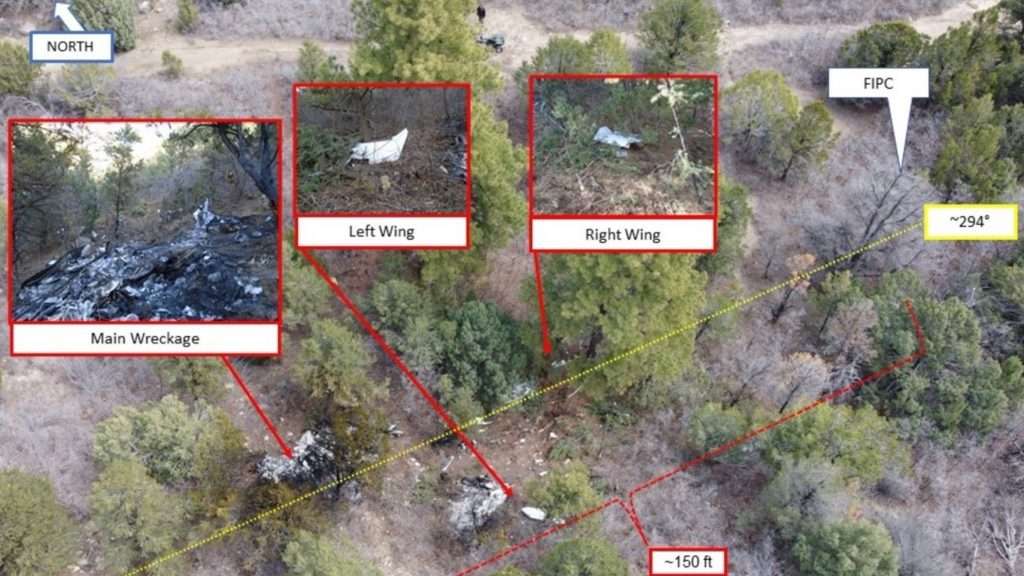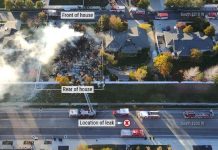
CEDAR CITY, Utah, May 7, 2022 (Gephardt Daily) — A preliminary National Transportation Safety Board report on the fatal April 23 airplane crash outside Cedar City describes the plane hitting a mountainside while struggling in a turn.
The crash killed four people, including Utah County Sheriff‘s Deputy Steve Eatchel and wife Lindsay Eatchel, and Steve’s brother Thomas Eatchel and girlfriend Danielle DeAgostini.
The four were in a small, fixed-wing plane piloted by Steve when it went down shortly after takeoff from the Cedar City Airport in a wooded area near State Route 14 and the mouth of Cedar Canyon, east of Cedar City.
Smoke rising from the crash site that day was seen at a distance and initially thought to be a wildfire. “Upon arrival, Sheriff deputies… discovered the burning remains of a downed aircraft,” a statement from the Sheriff’s Department said.
“Paramedics from Gold Cross Ambulance, Cedar Fire personnel and members of the Iron County Search & Rescue were dispatched, and arrived on the scene to assist.” The pilot and three passengers of the 2004 Diamond DA-40 aircraft were found deceased.
Clearly labeled preliminary throughout, the report states several times, “this is preliminary information, subject to change, and may contain errors. Any errors in this report will be corrected when the final report has been completed.”

It lists two witness accounts, the first that of a motorist, who is pilot-rated, driving westbound down Cedar Canyon when it spotted the aircraft flying up the canyon.
“The witness stated that as the airplane was about to pass over their position, it turned left and then right, and that the maneuvers were quick and more like a rocking motion.
“The witness added that propeller appeared to be under power and not windmilling.”
A second witness traveling on State Highway 14 near the accident site, reported he observed the airplane flying on an easterly heading, over the highway, about 200-300 feet above the ground. The witness stated that other than being low, the airplane did not appear to be in distress, however, his vehicle windows were up, and he could not hear the airplane’s engine.
After the airplane passed over their position, he looked in the mirror and saw the airplane “bank really hard to the south, back across the highway” as if the airplane were trying to turn around in the narrow canyon.
The witness stated at that point, the airplane’s wings appeared to be almost vertical and the airplane “didn’t look like it had enough speed to pull off that maneuver.”
Examination of the accident site revealed that the airplane impacted mountainous terrain along the southern edge of a canyon about seven miles southeast of the Cedar City Airport, reads the report.
“The airplane came to rest inverted …. The first identified point of contact (FIPC) was a tall tree that had damaged limbs near the top of the tree. The debris path was oriented on a magnetic heading of about 294 (degrees) and was about 150 feet in length from the FIPC to main wreckage. All major structural components of the airplane were located throughout the debris path.”





